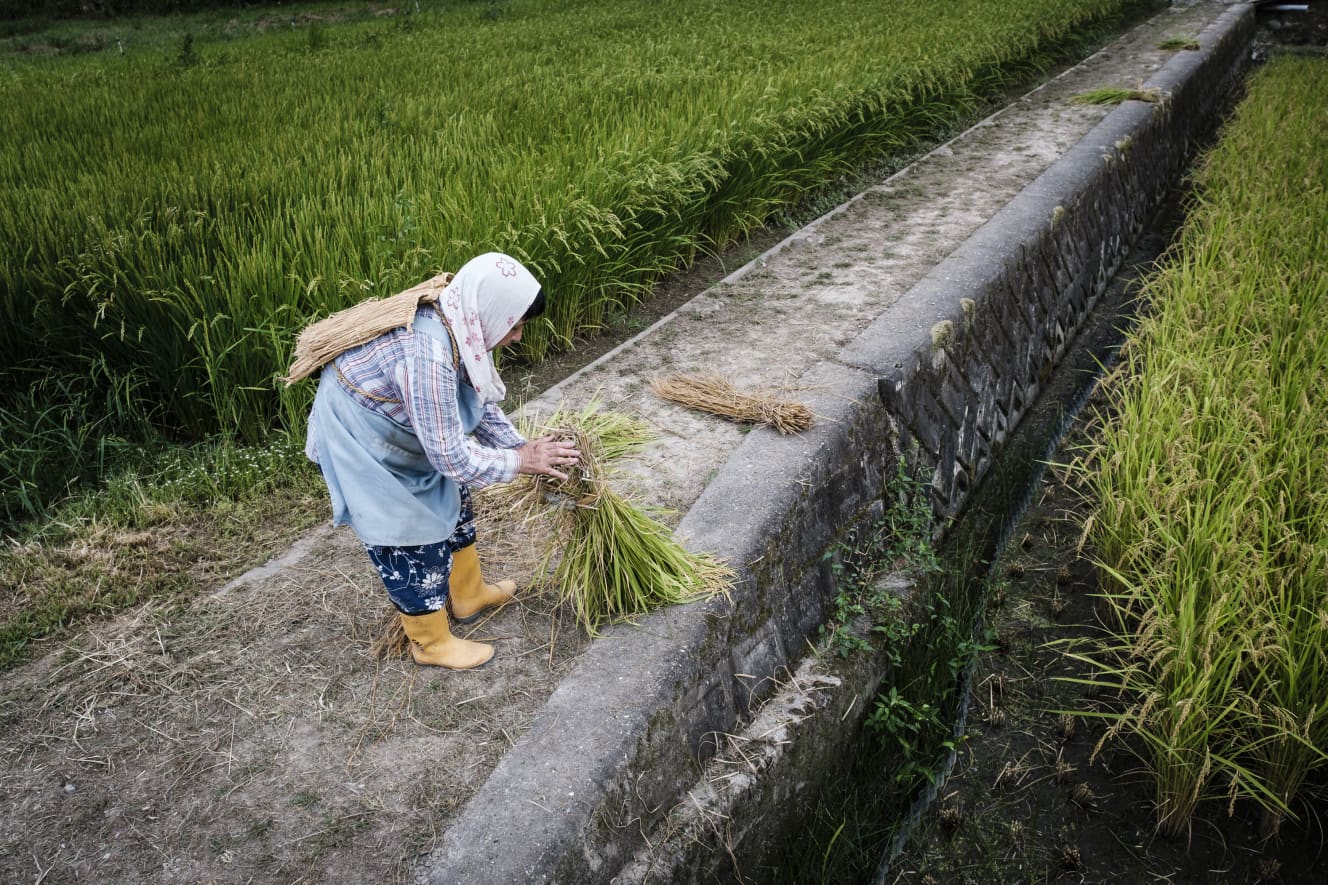Rice Shortage, Price Increases & Restrictions on Purchase in Stores! Worst case scenario in the 30’s…’The day when we will no longer be self-sufficient in rice’.
A “realistic scenario” for the ’30s presented by an industry group is “the worst-case scenario.”
The rice market is undergoing such a drastic change that a serious problem has been raised. Japan’s food security may be in jeopardy.
In March of this year, the National Rice Marketing Business Mutual Aid Cooperative presented its “Rice Distribution 2040 Vision,” which states, “In the worst-case ‘realistic scenario,’ domestic production alone may not be sufficient to meet domestic demand in the ’30s.
According to this realistic scenario, the production of rice in the year 2040 will be only 3.63 million tons compared to the domestic demand of 3.75 million tons, and the number of rice producers is expected to decrease by 65% from the year 2040, to about 300,000.
The number of rice farmers in Japan is aging and there is a lack of successors. There are various circumstances unique to rice production.
Akihiko Hirasawa, a research fellow at the Norinchukin Research Institute, says, “If you can make money from rice, you can make money from rice,
If they can make money from rice, rice farmers will let their families take over the business. Young farmers are farming vegetables, which are profitable. There is no doubt that the number of rice farmers will decrease significantly, and the question is who will take over the rice farming?
He raises the question, “Who will take over the rice farming?

Rice production requires water, labor, and high costs, according to Hirasawa. Rice paddies require water facilities, and in addition to building banks to prevent water leakage and hardening the bottom of the rice paddies, the amount of water must also be managed during cultivation. In addition to dealing with the rice paddies, there is also the work of making seedlings and planting rice. On the other hand, he also said that “vegetables do not use much land,” and that it is enough to sow seeds and water a limited amount of land.
While Japanese farmers manage 2-3 ha, the U.S. farmers manage 200-300 ha… and there is also a trend toward further dispersion.
Mr. Hirasawa points out that “the world’s agricultural competitiveness is determined by land area. The U.S., Australia, and other countries have introduced large machinery and airplanes on vast tracts of land, and they are farming with less human labor and producing at lower cost. Farmers in Japan average 2 to 3 hectares, while farmers in Europe average 20 to 30 hectares, in the U.S. 200 to 300 hectares, and in Australia wheat cultivation amounts to several thousand hectares.
In Japan, “terraced rice paddies” and “terraced fields” are often located on mountain slopes, and narrow, fragmented farmland is often gathered together for use. Even if rice and other grains are produced there, they cannot compete with Europe and the United States in terms of management efficiency.
Furthermore, in Japan, there is a strong tendency for farmland to be dispersed through inheritance, especially in western Japan.
In eastern Japan, land inheritance tends to be concentrated in the hands of the eldest son, while in western Japan, land tends to be divided among everyone in an attempt to make inheritance as equal as possible,” said Akihiko Hirasawa, Executive Research Fellow at the Norinchukin Research Institute.
In other words, Japanese farmers are facing a problem that is weakening their farming operations even more.